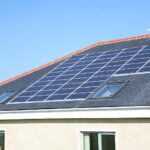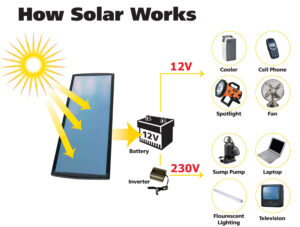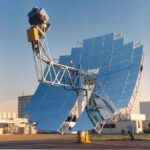 Solar power is the conversion of sunlight into electricity, either directly using photovoltaics (PV), or indirectly using concentrated solar power (CSP).
Solar power is the conversion of sunlight into electricity, either directly using photovoltaics (PV), or indirectly using concentrated solar power (CSP).
Solar photovoltaics (PV) are commonly called ‘solar panels’, and they are what most people think of when they hear the term ‘solar electricity’. Photovoltaic cell is a device that converts light into electric current using the photoelectric effect.
Photovoltaic or solar modules are made up of solar cells that are connected in series. The most common commercial cells are made from purified Silicon (Si).
The Silicon cell is essentially a p-n junction that utilises the energy from the sunlight to generate electron flow from the p-type Si (via an external resistance) to the n-type Si.
A typical solar module comprises of 36 cells connected in series to produce an operating voltage of 12V.
PV systems often include a battery bank for energy storage, and a charge controller that regulates the power flow into and out of the battery bank. Battery banks are typically sized in order to provide energy during days of no or limited sunshine (cloudy/rainy days).

One can use small PV system to power small appliances in the home and office – for example
- Lights
- Televisions
- Radios
- Microwave ovens
- Computers
- Water Geysers
- Water pumps
- Refrigerators

Solar PV installations (For privately homeowners and businesses) has grown at a tremendous rate in the last few years. By percentage, currently the fastest growing renewable power sources installations in the world.
Concentrating Solar Power (CSP) systems use lenses or mirrors and tracking systems to focus a large area of sunlight into a small beam.
The concentrated heat is then used as a heat source for a conventional power plant. Also read the article ; what is electricity on this website.


